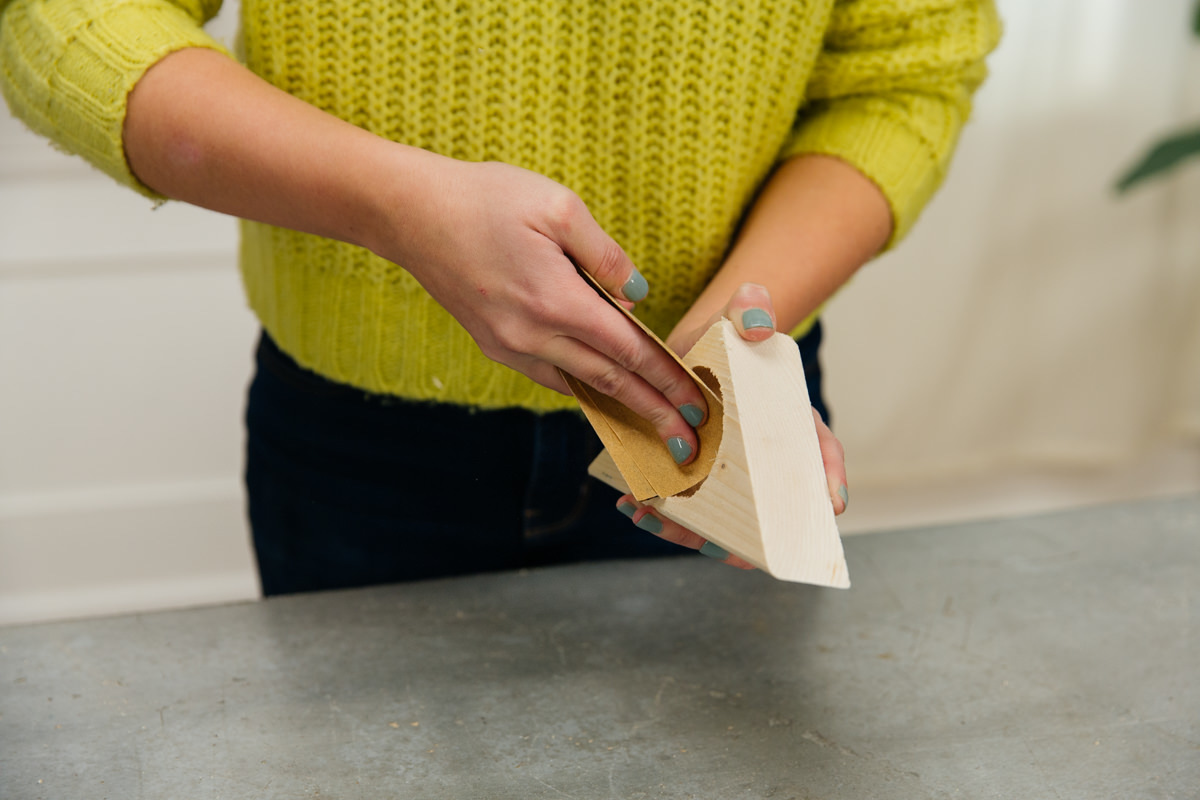
How to Make DIY Mini Succulent Planters

"One of the wonderful things about simplicity is that it's easy to alter, customize, and build off of."
Hello everyone, I hope you're all staying safe and sane at home these days. There's nothing like creating something to keep yourself busy and happy, and developing new pathways in your brain staves off insanity (that's true!). That's why we have a new DIY post for you this week—we picked this one specifically because it's a smaller project that doesn't require you to have too much on hand. These succulent planters only need some short lengths of lumber, a handsaw, a drill, and a hole saw. And while a hole saw is a little less common of an item to have on hand in your shop, you can always order one. At Dunn Lumber, we're offering curbside pick up as well as delivery—just call your local store for details.
I like this project because it's simple enough that you can easily tweak it. If you have two-by-sixes instead of two-by-fours, or if you have a hole saw of a different size, you can easily work around that. There's a lot of room for creativity with this project, too. Try stacking two pieces on top of each other to create more dimension and space in your planter. Pick your favorite stain, or change it up and paint your planter instead. You can pick up a succulent on your next grocery run or from your local nursery, if they're doing curbside pickup (like Molbak's). If you already have succulents in your home, you can do a quick Google search and learn how to propagate them.
Another reason we're bringing you this project this week is because plants are proven mood-boosters, but I've never considered myself to be someone with a green thumb. I love having plants in my home, but I definitely tend to choose greenery that’s low maintenance. I'm not great about watering and my apartment doesn’t get much light, so I need plants that can survive without a lot of water or sunlight. Enter succulents—specifically cacti.
I designed these planters for the tiniest of succulents because—if they're not thriving—I don't want them to be the center of attention. These planters have a very simple design, similar to the citronella candle from last summer, but I love the strikingly simple effect they have—especially when grouped together on a coffee table or mantelpiece.
One of the wonderful things about simplicity is that it's easy to alter, customize, and build off of. The steps of this project show you how to make these planters out of a two-by-four and a one-by-four piece of white wood, but I also tried using Douglas fir for the low profile of the one-by-four boards. Feel free to change up which type of wood you use, the dimensions or shape of your planters, or how you finish them. If you're new to drilling with a hole saw, though, I would recommend using softwood over hardwood if you have it, and don’t forget to make sure that the planter you’re designing accommodates the plant you want to put in it.
Step 1: Cut lumber
Start by cutting the two-by-four at a 45° angle using a handsaw and miter box.
For a triangular planter, make another 45° cut in the opposite direction to create a triangle. Make the same cuts on the one-by-four, but make the triangle slightly smaller to create that beveled edge on the bottom of the planter.
To make a diamond-shaped planter, measure 3 1/2” from the first 45° angle and make another 45° angle cut in the same direction. Repeat with a one-by-four, shrinking the length and width of the diamond slightly for the beveled edge, just like the triangle design.



Step 2: Drill hole with hole saw
Now it's time to drill the hole for the succulent to live in. You'll want to center the hole in between the three sides of the triangle, but note that this is different than the center of the triangle. The easiest way to center the hole is to trace the hole saw on a piece of paper, cut it out, fold the paper to find the center of the circle, and position the circle on the wood. Then, you can mark the center through the paper onto the wood.
Once the center of the hole is marked, clamp down the two-by-four on top of a scrap piece of lumber with the clamps on either side of the triangle. This will free up your hands to guide the drill. Drill a hole with a 2 1/4” hole saw.
If you’re not familiar with using a hole saw, it can be tricky at first. There’s a lot more contact than with a regular drill bit, which means it’s more likely for the drill to catch and give you some kickback. I like to point my elbow away from the drill, creating a right angle with the drill and my arm. This is a great way to protect your wrist from getting tweaked.
First, get the drill bit started in the center. Then, release any vertical pressure you’re putting on the drill, and turn the speed up to high. High speed, light pressure—that’s the trick. Once the hole saw starts cutting, you can apply more pressure if needed to deepen the hole. But continue to be careful of kickback, and relieve pressure if the saw seems to be getting stuck. It takes some practice to know whether a snag can be fixed with more or less pressure—or by removing the drill altogether and beginning again. With this specific board, I often had to pause to remove sawdust that was building up on the blade of the hole saw, and every so often my drill would overheat and the battery would shut down. This isn’t a big deal—just wait a minute or two for the drill to reset, then keep going.

Step 3: Sand planter
Because some of the edges of the planters are hand-cut and some are the manufactured cut, it’s best to sand the cut sides to a rounded shape so they match the manufactured edge. This is most easily done with an electric sander, but you can pull it off with a piece of sandpaper. I used my sander with 150 grit sandpaper for the edges and a piece of 150 grit sandpaper for the inside of the hole.



Step 4: Connect top and bottom of planter
Line up the top and bottom pieces of the planter so the overhang of the top piece is even on all sides. Then, trace the inside of the circle onto the one-by-four. Remove the top, and apply wood glue to the one-by-four piece around the circle mark. Be thorough but sparing with your glue—any that squeezes out when the two pieces are clamped together won’t allow the stain to penetrate and thus will be visible on your finished product. Line up the pieces again using the circle as your guide, and clamp or tape them together until the glue has dried. I used a fast-drying wood glue to speed up this process.



Step 5: Stain and finish
Now it's time to stain and finish these wood planters. I applied a dark stain to the white wood to bring out the grain. I ended up leaving the Douglas fir planter raw, but a favorite technique of mine is mixing white acrylic paint with some water to create a whitewashed effect on the fir. To protect the wood from water, apply a clear polyurethane finish once your stain has dried. As always, follow the directions on the can.


Step 6: Pot your plant
The final step for this project is to pot your succulent. If you’re planting a cactus like me and don’t have gloves to handle it with, you can wrap it loosely in a towel to avoid getting poked. And don’t worry about packing the dirt down around the cactus—they like loose soil. Once your plants are potted, add rocks for decoration.





Now that you’ve got a place for all of your tiny succulents, try building this cement planter or this stenciled wood planter to make space for your other plants. Or for more practice using a hole saw, try these wood napkin rings and this umbrella stand.






